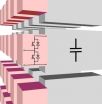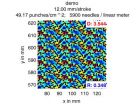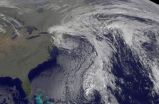(Press-News.org) Cars and trucks race down the highway, turn off into town, wait at traffic lights and move slowly through side streets. Electricity flows in a similar way – from the power plant via high voltage lines to transformer substations. The flow is controlled as if by traffic lights. Cables then take the electricity into the city centre. Numerous switching points reduce the voltage, so that equipment can tap into the electricity at low voltage. Thanks to this highly complex infrastructure, the electricity customer can use all kinds of electrical devices just by switching them on. "A reliable power supply is the key to all this, and major changes will take place in the coming years to safeguard this reliability. The transport and power networks will grow together more strongly as a result of electromobility, because electric vehicles will not only tank up on electricity but will also make their batteries available to the power grid as storage devices. Renewable energy sources will become available on a wider scale, with individual households also contributing electricity they have generated," says Professor Lothar Frey, Director of the Fraunhofer Institute for Integrated Systems and Device Technology IISB in Erlangen. In major projects such as Desertec, solar thermal power plants in sun-rich regions of North Africa and the Middle East will in the future produce electricity for Europe. The energy will then flow to the consumer via long high-voltage power lines or undersea cables. The existing cables, systems and components need to be adapted to the future energy mix now, so that the electricity will get to the consumer as reliably and with as few losses as possible. The power electronics experts at the IISB are working on technological solutions, and are developing components for the efficient conversion of electrical energy.
For energy transmission over distances of more than 500 kilometers or for undersea cables direct current is being increasingly used. This possesses a constant voltage and only loses up to seven percent of its energy over long distances. By comparison, the loss rate for alternating current can reach 40 percent. Additional converter stations are, however, required to convert the high voltage of the direct current into the alternating current needed by the consumer.
"In cooperation with Siemens Energy we are developing high-power switches. These are necessary for transmitting the direct voltage in the power grid and are crucial for projects like Desertec. The switches have to be more reliable, more scaleable and more versatile than previous solutions in order to meet the requirements of future energy supply networks," says Dipl.-Ing. Markus Billmann from the IISB. To this end, the research scientists are using low-cost semiconductor cells which with previous switching techniques could not be used for high-voltage direct-current transmission (HVDCT). "At each end of a HVDCT system there is a converter station," explains the research scientist. "For the converters we use interruptible devices which can be operated at higher switching frequencies, resulting in smaller systems that are easier to control." A major challenge is to protect the cells from damage. Each converter station will contain about 5,000 modules, connected in series, and if more than a few of them failed at the same time and affected their neighboring modules a chain reaction could be triggered which would destroy the entire station. "We have now solved this problem. With our cooperation partners we are working on tailor-made materials and components so that in future the equipment will need less energy," says Billmann.
INFORMATION:
Power grid of the future saves energy
2010-11-09
ELSE PRESS RELEASES FROM THIS DATE:
California pistachios: Dietitian and Mother Nature approved
2010-11-09
BOSTON, November 8, 2010 – California pistachios took center stage at this year's American Dietetic Association's annual Food & Nutrition Conference & Expo (FNCE), the industry's premier conference where thousands of registered dietitians gather to learn about innovative nutrition research and emerging health trends.
Pistachios led with a strong presence with new research on the importance of mindful eating and, for the first time ever, participating in a session on emerging green food issues and solutions designed to sustain the environment along with good health.
The ...
Play with your kid, for their mental health's sake
2010-11-09
Learning a hobby or other complex task in childhood with assistance from a trusted adult may help guard against the emergence of a personality disorder (PD) later on in life, reports a study in the current issue of the journal, Development and Psychopathology.
Spending time with a child by reading with them, helping with homework or teaching them organizational skills helps to foster better psychological health in adulthood.
"The strong interpersonal connectedness and social skills that children learn from having active, healthy engagements with adults fosters positive ...
Perfectly needled nonwoven
2010-11-09
What do diapers, wiping cloths, wall paneling, sticking plasters and Ultrasuede covers for upholstered furniture have in common? All these products are made of nonwovens. There is hardly any other fabric that is as versatile. Last summer the operators of the Zugspitze railroad even used sheets of nonwovens to prevent the snow melting away on Germany's highest mountain. The quality of this textile, however, varies considerably. It is generally true to say that the firmer, the smoother and the freer of marks the nonwoven is, the higher the quality. In the search for the perfect ...
Simulating black hole radiation with lasers
2010-11-09
A team of Italian scientists has fired a laser beam into a hunk of glass to create what they believe is an optical analogue of the Hawking radiation that many physicists expect is emitted by black holes. Although the laser experiment superficially bears little resemblance to ultra-dense black holes, the mathematical theories used to describe both are similar enough that confirmation of laser-induced Hawking radiation would bolster confidence that black holes also emit Hawking radiation.
When Stephen Hawking first predicted the radiation bearing his name in 1974, he hypothesized ...
Door-to-balloon time drops for heart attack patients, but mortality rates unchanged
2010-11-09
ANN ARBOR, Mich. - Door-to-balloon time has dropped dramatically as hospitals rush heart attack patients into treatment, but a five-year study released Monday shows quicker hospital care has not saved more lives.
Heart attacks are a medical emergency and hospitals race against the clock to open the clogged artery causing the attack in 90 minutes or less.
Door-to-balloon time is the amount of time between a heart attack patient's arrival at the hospital to the time he or she receives an intervention, such as a balloon angioplasty, to open the artery.
The study published ...
Special skin keeps fish species alive on land
2010-11-09
A new study shows how an amphibious fish stays alive for up to two months on land. It's all in the skin.
Mangrove killifish are small fish—only about an inch or two long—that live in temporary pools in the coastal mangrove forests of Central and South America and Florida. During dry seasons when their pools disappear, the fish hole up in leaf litter or hollow logs. As long as they stay moist, they can survive for extended periods out of water by breathing air through their skin. But oxygen isn't the only thing a fish out of water needs to worry about, according to Professor ...
UNC scientists identify cellular communicators for cancer virus
2010-11-09
Chapel Hill - A new discovery by UNC scientists describes how cells infected by the Epstein-Barr virus (EBV) produce small vesicles or sacs called exosomes, changing their cellular "cargo" of proteins and RNA. This altered exosome enters cells and can change the growth of recipient cells from benign to cancer-producing.
In this way, virus-infected cells can have wide-ranging effects and potentially manipulate other cells throughout the body. The findings are reported in the November 8, 2010 early online edition of the Proceedings of the National Academy of Sciences.
Nancy ...
Dangerous chemicals in food wrappers likely migrating to humans: U of T study
2010-11-09
University of Toronto scientists have found that chemicals used to line junk food wrappers and microwave popcorn bags are migrating into food and being ingested by people where they are contributing to chemical contamination observed in blood.
Perfluorinated carboxylic acids or PFCAs are the breakdown products of chemicals used to make non-stick and water- and stain-repellant products ranging from kitchen pans to clothing to food packaging. PFCAs, the best known of which is perfluorooctanoic acid (PFOA), are found in humans all around the world.
"We suspected that ...
GOES-13 satellite sees cold front stalking remnant low of Tomas
2010-11-09
The GOES-13 satellite is watching a flurry of activity in the Atlantic Ocean today as a cold front approaches the remnants of Hurricane Tomas and threatens to swallow it in the next couple of days.
Tomas is now a remnant low pressure area is located in the Atlantic near 26 North and 68 West hundreds of miles south-southwest of Bermuda and has a minimum central pressure of 994 millibars today, Nov. 8. A cold front off the U.S. East Coast however, is stalking Tomas' remnants and moving east threatening to swallow the former hurricane.
The Geostationary Operational Environmental ...
NASA sees Tropical Depression Jal's remnants entering and leaving India
2010-11-09
Jal was a tropical storm when it made landfall this weekend on the east coast of India and tracked across the country while weakening into a remnant low pressure area. NASA's Terra satellite captured an image of Jal's center as it was entering eastern India and NASA's Aqua satellite captured an infrared image as it was departing the country.
This weekend, Tropical Cyclone Jal made landfall in east central India and crossed the northern coast of Tamil Nadu and southern coast of Andhra Pradesh, north of Chennai. It dropped heavy rainfall and created some flooding. Gusty ...






